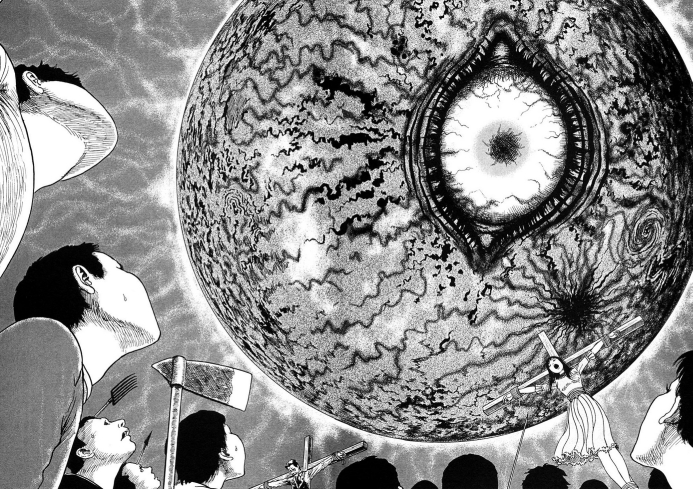 Horror and science fiction are the two genres that forked away from Mary Shelley’s Frankenstein. That story contained elements of both, but the forward-thinking optimism of science fiction warred against the regressive atavism of horror, and the styles went their separate ways.
Horror and science fiction are the two genres that forked away from Mary Shelley’s Frankenstein. That story contained elements of both, but the forward-thinking optimism of science fiction warred against the regressive atavism of horror, and the styles went their separate ways.
Some artists have wondered whether the genres are destined to combine again someday. What if the end product of science is horror? What if our increasing body of scientific knowledge is a Malthusian trap destined to destroy us? Pierre and Marie Curie discovered radium at the turn of the century. They thought they had found something benign and interesting – further developments produced a weapon that blasted 200,000 people to dust. We now live in an age of robotics and genomics – many dice are in the air, and who knows where they’ll land. While we wait, we might get a forewarning in the form of art. Certainly Frankenstein seems to have predicted a few things.
Hellstar Remina is a one-volume manga that Junji Ito created in 2006 that serves as a marriage of science fiction and horror set in a near-future earth. A strange planet has been discovered in the night sky, and it is on collision course with Earth. As panicking mobs tear cities apart, a group of people make a stand against the cosmic darkness filling the sky and the man-made darkness engulfing the the world below.
Remina isn’t as scary as Uzumaki or as revolting as Gyo, but it moves at a blistering pace, and if the story’s developments sometimes don’t make sense, at least you’re not given enough time to think about them. Without exaggerating, as much happens in Remina‘s one volume as happens in Uzumaki‘s three. Impressively, character development isn’t totally perfunctory, with a lot of cultists and greedy industrialists and whatnot. The end of the world means an end to consequences, and Ito documents mankind’s pathology to the full.
Remina is Ito’s most advanced work from an artistic standpoint. Buildings topple like dominoes, blast overpressure waves scatter crowds of people, and tsunamis engulf landscapes. There’s so much complicated and difficult art here, and all of it is rendered in Ito’s signature “organic” style. You’re a little scared to touch this guy’s drawings, his linework seems to be made of squirming bacteria rather than ink.
The bonus story “Army of One” is a welcome addition to the volume. A mysterious lunatic is stitching dead bodies together, and to make it worse. Very spooky and cool. Don’t waste time thinking about the ending – obviously not even Ito knows what it means.
Ito is a fan of sci-fi from way back…I’ve heard that his first creative effort was an abandoned SF novel in the style of Sakyo Komatsu. Hellstar Remina isn’t his best work, but it’s arguably the last 100% good thing he did for his fans, and a crazy ride to remember by any standard. Ito would soon lose his fastball and start creating boring Ray Bradbury ripoffs like Black Paradox. But for now, doomsday looms.
No Comments »
Comments are moderated and may take up to 24 hours to appear.
No comments yet.
